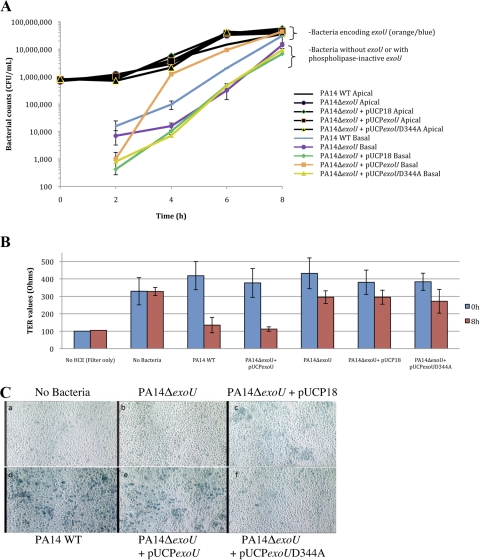Figure 2.
(A) Complementation of PA14ΔexoU with pUCPexoU returned bacterial traversal of human corneal epithelial cells to wild-type PA14 levels. Complementation of PA14ΔexoU with pUCPexoUD344A, which lacks phospholipase activity, did not promote traversal and was similar to the empty vector (pUCP18) control, except at 2 hours. All strains grew similarly in the apical compartment. (B) Complementation of PA14ΔexoU with pUCPexoU caused TER disruption similar to wild-type. Complementation with phospholipase inactive exoU (pUCPexoUD344A) did not affect TER. (C) Complementation of PA14ΔexoU with pUCPexoU also restored cytotoxicity toward multilayered human corneal epithelial cells after 3 hours, as shown by trypan blue staining. Top (left to right): no bacteria control, PA14ΔexoU, and PA14ΔexoU complemented with empty vector pUCP18. Bottom (left to right): PA14 wild-type, PA14ΔexoU complemented with pUCPexoU and PA14ΔexoU complemented with pUCPexoUD344A (phospholipase domain mutant).

